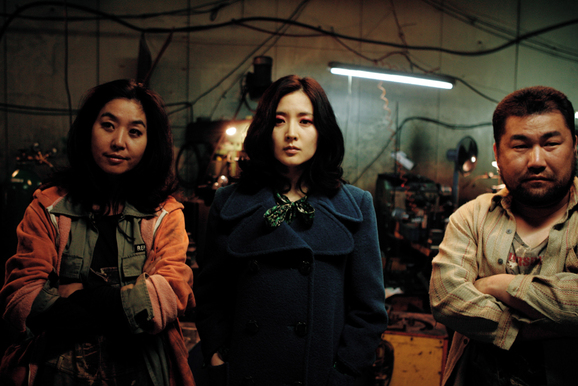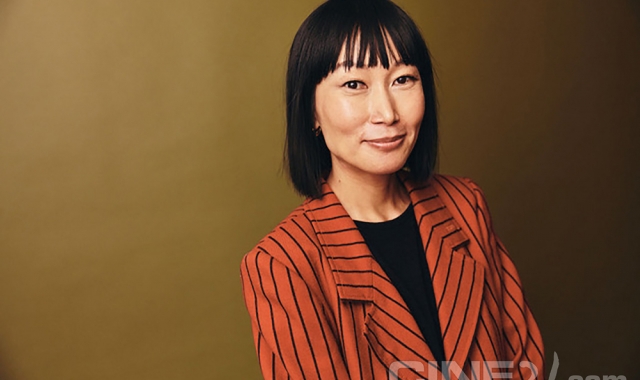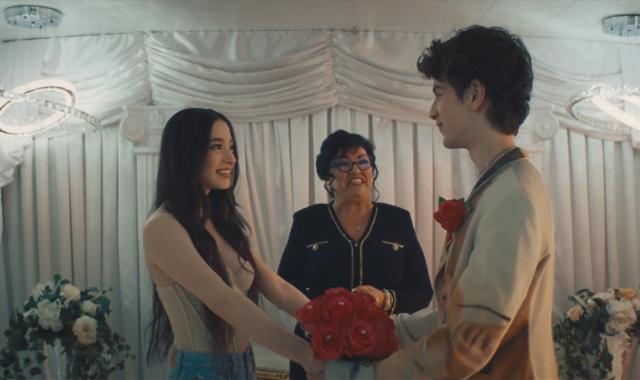
한국영화가 국제시장에 개봉될 때, 영어 제목은 누가 붙이는가? 이유가 무엇이든간에 실제로 마지막 결정은 국제 세일즈사가 하게 된다. 그들이 선택하는 제목은 영화제 상영이나 영어권 국가에서의 일반개봉 때 사용된다. (지역 배급업자가 그것을 바꾸기로 결정하지만 않는다면 말이다- 북미 개봉 때 <친절한 금자씨>의 영어 제목은 <Sympathy for Lady Vengeance>에서 <Lady Vengeance>로 바뀌었다.
그렇지만 수많은 과거의 한국 고전영화와 같이 국제 세일즈사가 없는 영화들은 어떤 실정인가? 신상옥 감독의 고전 <사랑방 손님과 어머니>(1961)를 살펴보자. 한국영상자료원의 온라인 데이터베이스에는 <Mother and a Guest>로 되어 있다. 2001년 부산영화제에 상영될 때는 <Mother and a Guest in the Master’s Room>이라는 제목이 붙었다. 2002년 뉴욕 현대미술관(MOMA)에서 있었던 신상옥 회고전 상영에서는 <My Mother and Her Guest>라고 제목이 붙었다. 한편 이번 봄학기 하버드대 강의에서 이 영화를 가르칠 때는 <The Houseguest and My Mother>라는 제목이 사용됐다. “Shin Sang-ok”으로 구글 검색을 해보면 <Mother and the Houseguest> <My Mother and the Lodger> <Mama and the Boarder> 같은 제목이 뜬다. 신상옥 감독에 대한 지식이 별로 없는 사람들은 감독이 어머니와 숙박객에 관한 영화를 한편이 아니라 연작을 만들었다고 믿을 수도 있을 것이다.
이런 혼동은 다른 영화에서도 발생한다. <자유부인>(1956)이 전형적인 예다(<Madame Freedom>? <A Free Woman>? <Mrs. Liberty>?). 영화사 학생에게 두통을 안겨주는 것은 그렇다 하더라도, 표준화된 제목이 없어서 일어나는 또 다른 문제들이 있다. 최근 한 영화학자는 1980년대 호주 텔레비전에 방송됐던 한국영화의 기록을 찾을 수 있었음에도, 영어 제목으로는 어떤 영화인지를 알아낼 수 없었다고 말했다. 또, 온라인 데이터베이스나 인터넷 검색의 문제들이 있다. 한국영상자료원은 영어로 풍부한 정보를 이용할 수 있게 하는 온라인 데이터베이스로, 실로 놀라울 정도의 리소스를 만들어냈지만 영어로 검색할 땐 무언가를 찾아낸다는 것이 너무나 어렵기 때문에 본인이 아는 대부분의 외국인들은 곧 포기하고 만다.
이런 문제들은, 중국과 같은 나라에선 학교에서 배우는 표준화된 로마자 표기법인 병음 체계가 있는 반면, 한국어 단어를 로마자로 표기하는 데 있어서 폭넓게 동의를 이룬 체계가 없다는 것을 생각해볼 때 더 악화되어 나타난다. 한국 밖의 학계는 한 체계를 사용하고, 한국 정부는(대부분의 사람들이 생각하는 것보다는 훨씬 복잡하기 때문에 어떻게 사용되는지 거의 아는 사람이 없는) 또 다른 체계를 사용한다. 그리고 대다수의 사람들은 그냥 하고 싶은 대로 로마자 표기를 하곤 한다. 그래서 로마자로 표기된 한국어 제목을 갖고 온라인 정보검색을 하는 것 역시 가망없는 일이다.
복수 제목의 문제는 한국에만 있는 것은 아니다. 일본, 중국, 프랑스영화를 공부하는 사람들도 이런 문제에 종종 부딪히게 된다. 그렇지만 모든 사람들이 쓸 수 있는 중앙의 공식적인 영어 제목 리스트가 있다면 얼마나 좋을까? 어떤 분야에서든 표준을 세우려면 폭넓은 협조와 정치적 감수성과 잘된 홍보가 필요하지만, 한국영화를 위해 그런 일을 하는 것은 가능하리라 생각된다.
한국과 외국의 영화학과 교수, 영화제 프로그래머, 영화사학자, 비평가로 구성된 위원회가 완전한 목록을 갖고, 모두가 사용할 수 있는 문법적으로 올바른 영어 제목을 만든다고 상상해보자(만약 1919에서 2000년 사이에 제작된 5천편 이상 되는 모든 영화를 하기 힘들다면, 적어도 선별작업을 통해 할 수는 있을 것이다). 모든 제목이 들어간 단순한 엑셀파일을 영진위와 영상자료원 웹사이트에 올리고, 앞으로 참조할 수 있게 전세계 영화제나 대학에도 보낼 수 있을 것이다. 물론, 모든 사람들이 그것을 사용하리란 보장은 없지만, 그런 목록이 있다면 오늘날 발생하고 있는 혼동의 수준을 굉장히 많이 낮출 수 있을 것이다.
When a Korean film is released into international markets, who gets to choose the English title? For all practical purposes, it is usually the international sales company that has the final say. The title they choose is then used for festival screenings and its commercial release in English-speaking countries. (Unless a local distributor decides to change it ? the English title of <친절한 금자씨> will be changed from Sympathy for Lady Vengeance to Lady Vengeance for its North American release)
But what about films with no international sales company, such as the many classic films from Korea's past? Let's consider Shin Sang-ok's classic <사랑방 손님과 어머니> (1961). The Korean Film Archive's online database refers to the film as Mother and a Guest. When PIFF screened the film in 2001, it used the title Mother and a Guest in the Master's Room. When a retrospective of Shin's films screened at the MOMA in New York in 2002, the title was My Mother and Her Guest. When the film was taught in a course at Harvard this spring, the title The Houseguest and My Mother was used. A Google search for "Shin Sang-ok" also turns up titles like Mother and the Houseguest, My Mother and the Lodger, and Mama and the Boarder. People with a limited knowledge of Shin Sang-ok might be forgiven for believing that the director made not one, but a whole series of films about mothers and houseguests.
Such confusion also exists for other films -- <자유부인> (1956) is a classic example (Madame Freedom? A Free Woman? Mrs. Liberty?). Apart from giving film history students a headache, other problems arise from this lack of standardized names. A film scholar recently told me that, although she was able to find records of Korean films screened on TV in Australia in the 1980s, she couldn't figure out from the English titles what films they were. Online databases and internet searches are another problem. The Korean Film Archive has made a truly amazing resource in its online database, with a wealth of information available in English, but most foreigners I know quickly give up because it's so hard to find anything when searching in English.
These problems are made worse when considering that, in contrast to a country like China, that has a standardized Pinyin romanization system that is taught in schools, there is no widely-agreed upon system to romanize Korean words. The academic world outside of Korea uses one system, the Korean government uses another (which very few Koreans know how to use ? it's more complex than most people realize), and the majority of people simply romanize words however they feel like it. So searching for information online with romanized Korean titles is also a non-starter. The problem of multiple titles is not unique to Korea ? people studying Japanese, Chinese or French films often run into similar issues. But how nice it would be if there were a centralized, official list of English titles that everyone could refer to? Establishing standards in any field requires wide co-operation, political sensitivity and good publicity, but it would probably be possible to do such a thing for Korean cinema.
Imagine a committee made up of local and foreign film professors, festival programmers, film historians, and critics who could go through a complete list of films and establish grammatically correct English titles that everyone could use. (If not all the 5000+ films produced between 1919-2000, then at least a selection) A simple Excel file containing all the titles could then be posted on the KOFIC and Korean Film Archive websites, and sent to universities and film festivals around the world for future reference. Of course, there is no guarantee that everyone would use it, but such a list would go a long way towards reducing the level of confusion that currently exists today.






